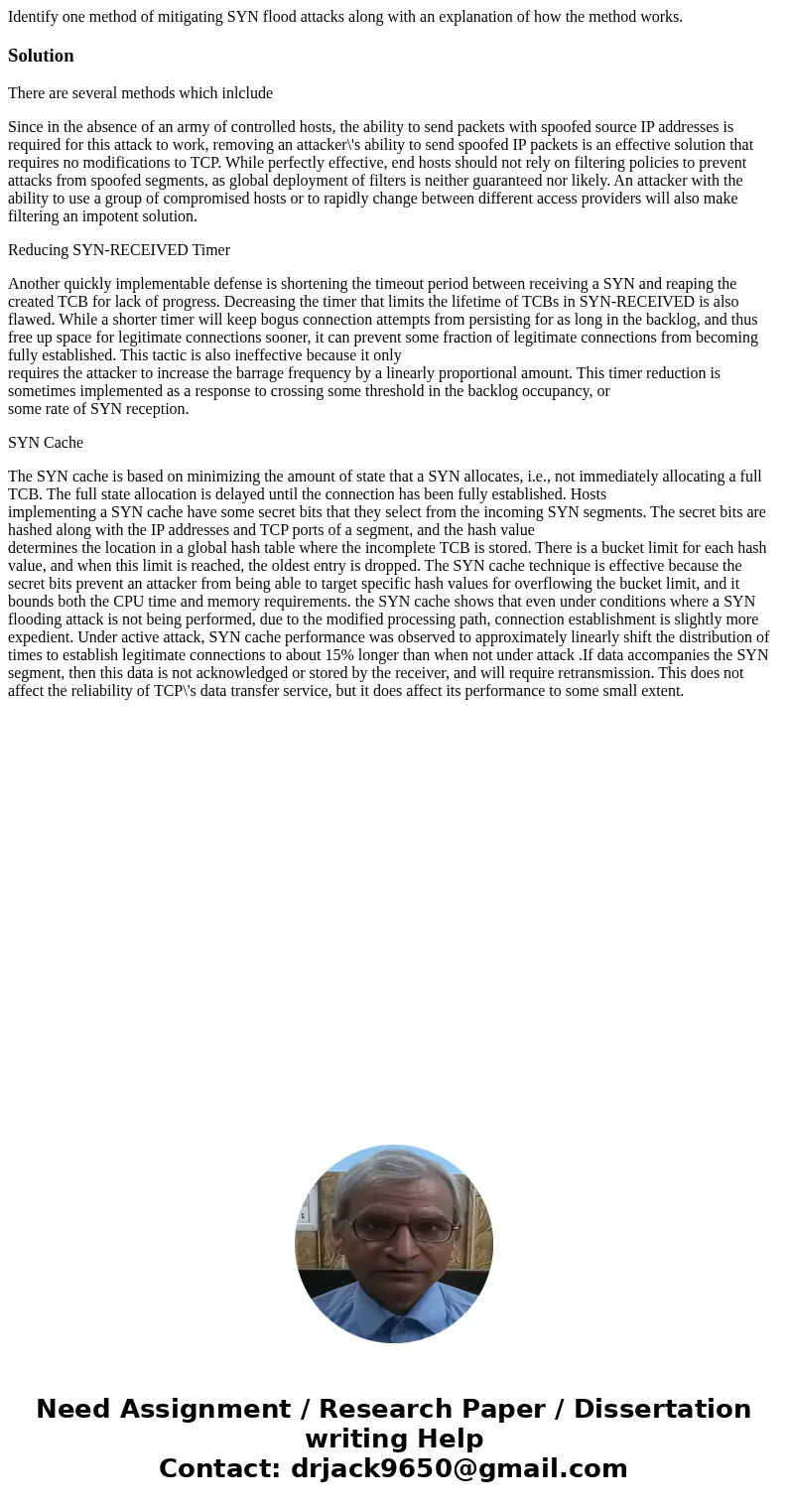Identify one method of mitigating SYN flood attacks along wi
Identify one method of mitigating SYN flood attacks along with an explanation of how the method works.
Solution
There are several methods which inlclude
Since in the absence of an army of controlled hosts, the ability to send packets with spoofed source IP addresses is required for this attack to work, removing an attacker\'s ability to send spoofed IP packets is an effective solution that requires no modifications to TCP. While perfectly effective, end hosts should not rely on filtering policies to prevent attacks from spoofed segments, as global deployment of filters is neither guaranteed nor likely. An attacker with the ability to use a group of compromised hosts or to rapidly change between different access providers will also make filtering an impotent solution.
Reducing SYN-RECEIVED Timer
Another quickly implementable defense is shortening the timeout period between receiving a SYN and reaping the created TCB for lack of progress. Decreasing the timer that limits the lifetime of TCBs in SYN-RECEIVED is also flawed. While a shorter timer will keep bogus connection attempts from persisting for as long in the backlog, and thus free up space for legitimate connections sooner, it can prevent some fraction of legitimate connections from becoming fully established. This tactic is also ineffective because it only
requires the attacker to increase the barrage frequency by a linearly proportional amount. This timer reduction is sometimes implemented as a response to crossing some threshold in the backlog occupancy, or
some rate of SYN reception.
SYN Cache
The SYN cache is based on minimizing the amount of state that a SYN allocates, i.e., not immediately allocating a full TCB. The full state allocation is delayed until the connection has been fully established. Hosts
implementing a SYN cache have some secret bits that they select from the incoming SYN segments. The secret bits are hashed along with the IP addresses and TCP ports of a segment, and the hash value
determines the location in a global hash table where the incomplete TCB is stored. There is a bucket limit for each hash value, and when this limit is reached, the oldest entry is dropped. The SYN cache technique is effective because the secret bits prevent an attacker from being able to target specific hash values for overflowing the bucket limit, and it bounds both the CPU time and memory requirements. the SYN cache shows that even under conditions where a SYN flooding attack is not being performed, due to the modified processing path, connection establishment is slightly more expedient. Under active attack, SYN cache performance was observed to approximately linearly shift the distribution of times to establish legitimate connections to about 15% longer than when not under attack .If data accompanies the SYN segment, then this data is not acknowledged or stored by the receiver, and will require retransmission. This does not affect the reliability of TCP\'s data transfer service, but it does affect its performance to some small extent.

 Homework Sourse
Homework Sourse